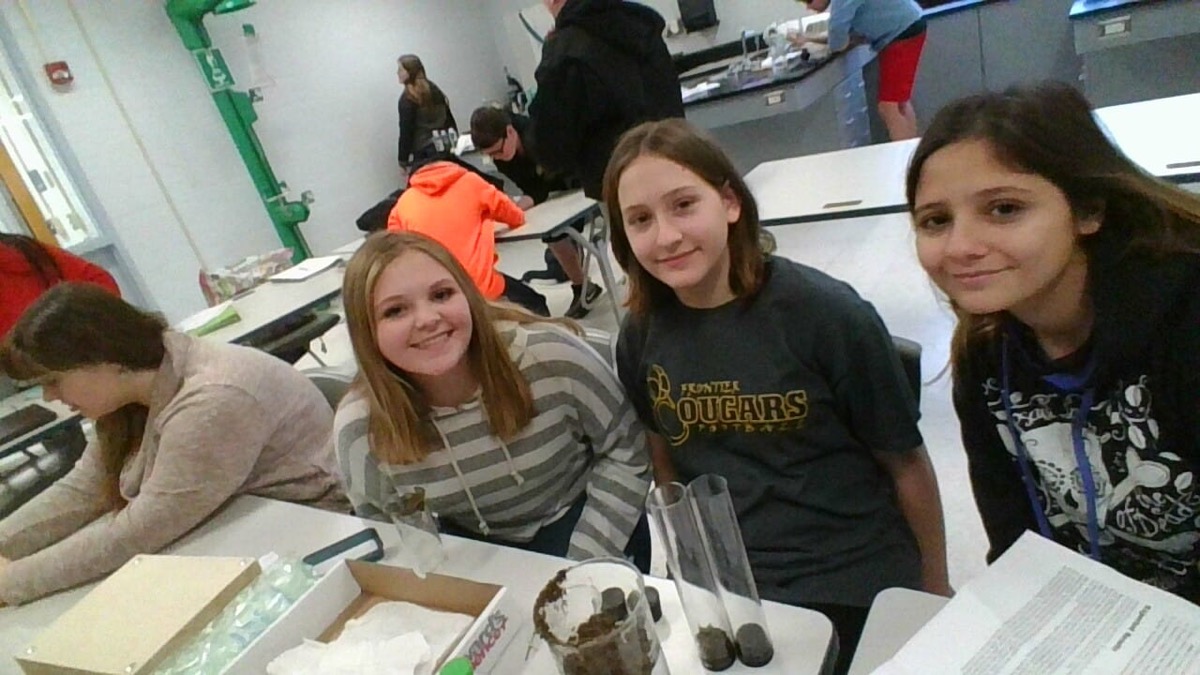STEM lab stations provide hands-on learning
Michael Kahlig teaches middle school science at Frontier Local School. He attended an Ohio Oil and Gas Energy Education Program workshop and was so excited with what he learned that he set up labs for each of the STEM curriculum topics! Here, he talks about how it went:
This past summer I had the opportunity to attend the OOGEEP teacher workshop and I am sure glad I did! I gained valuable insight and information about the oil and gas process, industry, and careers, along with many other interesting facts. To top it off, I also received a teacher kit with numerous labs and STEM activities. Excited to try something new with my 8th grade students, I created a game plan and put it into action this past month!
I first explained to the students that we would be doing something a little bit different for this unit. I wanted to incorporate all 7 stations and all the vocabulary that accompanied each station. I gave a very basic outline of the vocabulary, broke the students up into groups, and passed out the information. This was outside my comfort zone a bit, because I am normally the one that facilitates/guides the students and instruction. For this unit, I put the students into 7 different groups, gave the students their topic to research, and explained to them that they would be the teachers and they needed to come up with a presentation pertaining to their particular topic.
The students took charge and got to work right away on their presentations and research. It was incredible to hear the students talking and formulating plans and learning on their own! The conversations and learning that took place during the first few days of research and presentation was invaluable. After the students had ample time to work on their presentations, I had them teach their topics to the class. After the presentations, I passed out a number of STEM activities that went along with each station.
Formation station:
It's a gas lab—Students loved getting their hands dirty! They were also happy that they stunk up the science classroom with decaying tuna! Seeing the balloon start to inflate really brought the concept home.
Winogradsky column—Students really enjoyed creating this project. They were able to go outside, which rarely happens, to set up the columns. Then every day they'd check out what was happening to the columns.

Migration and Trapping station:
Porosity and Permeability lab—Students explored these two concepts using the provided materials. I think that this activity really helped the students understand these two difficult vocabulary terms.
Exploration station:
Sound Board lab—I created the sound board for this activity. The students really liked trying to guess where the best place to drill would be. It only took a few minutes for the students to realize that if they drum on it, some portions sounded hollow. Interesting to see their “ah-ha” moments!
Skewer Contour Mapping lab—The students created different landscapes using the putty and styrofoam containers. Next they would try to figure out another group's landscape. Great way to get the students thinking about topography and altitude and Earth’s surface in general.
Drilling and Well Stimulation station:
Sweet Exploration lab—This particular lab was used during the presentation. Students explained and demonstrated using the Twinky and filling as their models. Using this as a visual definitely helped the students understand.
Weighty Problems lab—This lab was a hit! The students really got into the construction and engineering process of this lab. They tested multiple ways and then placed the weights on. When that failed, they would build a different style, or change something to improve it. It was neat to watch the students working together and working through different ideas!
Producing and Transporting station:
Transporting Natural Gas lab—Another student favorite! They loved to challenge each other and place different obstacles in different places. They figured out that the golf ball or oil was much easier to transport than the ping pong ball. The students really worked together and it was interesting to see a leader emerge from the different groups.
Refining and Processing station:
Standard Distillation lab—The students distilled a solution of acetone and water. This was a real eye-opener for all of my students. Many students did not understand that you can separate liquids using heat and boiling points. This lab was a great attention-getter and really sparked great group discussions about boiling points, thermal energy, and what exactly is in crude oil.

Petrochemicals and Products station:
Petrochemical Fabric Test lab—Students at this station took a close look at the different fabrics and analyzed each one. The conversations that took place between the group members were my favorite part of this lab. They were asking each other questions and debating different things.

I enjoyed using every one of the STEM labs that correlated with the stations. I believe that the students really did benefit from the hands-on learning. Learning about a concept and then actually seeing the concept in action drives home the ideas being taught. My favorite part about this experience was watching my students interact with one another. The conversations really did show that the students were taking ownership of their learning! Overall the students really liked the STEM labs and the hands-on approach to learning.